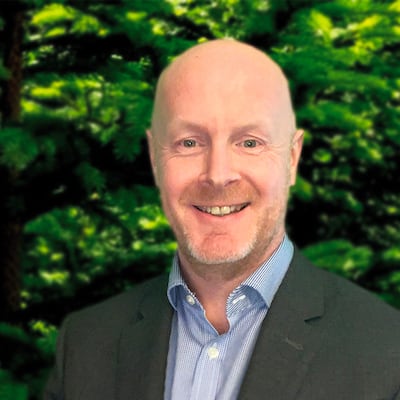
Gary Landels
The UK Government recently set out its Ten Point Plan for what is referred to as the “Green Industrial Revolution,” an all-encompassing phrase to drive the UK toward a net-zero carbon economy by 2050. It’s a bold and ambitious plan that touches on several aspects that are close to PSC’s heart as specialist consultants to the electricity industry. In this blog series, Gary Landels asks questions of PSC’s industry experts in the offshore wind, transmission and distribution sectors and discusses what impact and potential solutions could be developed and/or implemented to help ensure the targets set in the UK’s Ten Point Plan can be achieved.
Offshore Wind

Mike Hook, PSC Senior Power Systems Engineer
First up in this first of three blog posts and at the top of the UK’s Ten Point Plan is the advancement of the offshore wind sector. I’ve asked my PSC colleague Mike Hook to share his views on how he thinks the ambitious targets can be achieved and what technology developments are required. Mike is a Chartered Electrical Engineer at PSC and he’s the current lead technical advisor to Diamond Transmission Corporation.
GL: What do you think the future of UK offshore wind will look like as we move toward achieving the UK Government’s target of 40GW by 2030?
MH: Firstly, I’m not surprised offshore wind is going to play such a big part in achieving the net-zero carbon target given the significant cost reductions achieved over the last few years. Offshore wind is now comparable in cost to conventional thermal generation with the technology continuing to develop to reduce costs further.
To achieve 40GW of offshore wind it’s going to require large-scale offshore wind farms installed in seabed conditions which are not suitable for the standard monopile and basic jacket foundations that have been used to date. These are likely to be located further from shore and in deeper waters than have been seen so far. Utilizing floating offshore wind farms will likely allow installation in more areas around the UK other than the North Sea and Irish Sea, where most UK offshore wind farms are currently located.
I also expect the trend for increasing the size of wind turbines to continue.
GL: What challenges will the industry need to overcome to ensure the targets can be met?
MH: Many of the concepts and technology required for installing structures in deeper waters, including floating structures, exist from the oil and gas industry and some of these concepts are currently being trialed on small-scale offshore wind developments. For larger-scale developments in deep waters, dynamic cables at higher voltages than currently exist will likely need to be developed to allow for power to be exported at transmission voltages.
For larger-scale projects located far from shore but in shallow waters, HVDC will play an important role in connecting these sites to the onshore transmission system. Offshore HVDC platforms are not new but are yet to be utilized within the UK.
Additionally, larger wind turbines may result in the requirement for higher voltage intra-array cabling up to 132 kV. This brings challenges in the design of the cable and the equipment required to be installed within the wind turbine. This is an area studied by PSC.
Considering PSC’s substantial experience in offshore wind, power system studies, and HVDC technology, we expect to continue to be heavily involved in wind projects throughout the UK and beyond.
GL: How do you think the current Offshore Transmission Owner (OFTO) regime will fit into the scale of wind farms and the technology used and what will the challenges be for OFTOs?
MH: As the technical advisor to the largest UK OFTO, Diamond Transmission Corporation, we are well aware of the structure, capability and setup of the OFTOs. The UK regulator often provides statements on the success of the OFTO regime in lowering costs to the consumer so I expect this to continue.
The OFTOs have already developed as entities from the early small-scale projects to the large Tender Round 6 projects of Hornsea One and East Anglia One and I expect this development to continue. New technology, particularly for cables, often causes concerns among project lenders and insurers due to the failures that occurred on a number of projects in 2015. As an advisor to the OFTO themselves and also the lenders, we will need to undertake robust due diligence on any technology developments to ensure we are confident it will have sufficient reliability for the project lifetime.
GL: Please read the second of this three-part series as I interview Steve Nutt about how the UK transmission network will transition to meet the changing needs of both generators and consumers, again in the context of the UK’s Ten Point Plan.
